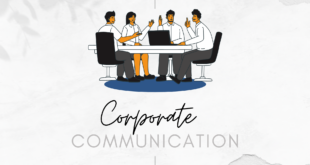Managing the workplace and the staff that is a part of it is never an easy task. It is difficult and challenging to organize the workforce for a small business, let alone for a larger one that has multiple different sectors and teams to pay attention to. Unless everyone is doing the most with their time and have their schedules optimally filled out, the business will suffer. When the business suffers, the revenue is low, which then results in the company’s inability to pay the workers. Everything starts with a good management strategy in the modern times including the organization of workforce. As somebody at the top of the business, it is up to you and your subordinates to come up with a plan that works. Once it is in motion, the rest will come easy and the business will prosper.
Before you get there you need to understand why it is so important and what makes it such. In this article we talk about the many sides of a good workforce management strategy so that you can implement something similar. One of the things that will surely help you along the way is proper software. It is no longer possible to do things of this scale and importance the old-fashioned way.
Proper software installed on the right hardware is all you can ask for in terms of assistance here. To find out more about this, make sure to check out Equus Software. Novelty solutions like this take complex tasks and make them easier than ever so that you can be free to do other important things in the workplace. Human touch is much more needed elsewhere a lot of the time.
Workforce has Changed

The typical workforce has changed drastically in the last several decades. Basically, when modern technologies started becoming more and more widespread, the profile of an average employee has changed too. The traditional model of a nine to five workplace has been shifting towards contingent workers with flexible schedules, employees working from home, and those that come in multiple times a day to perform their tasks.
The workforce and the workplace are tailored according to the needs of the job and the business, meaning there is no reason to have the same nine to five norm for everyone. In addition to this, people are putting more attention to their private lives and they are willing to suit their job to their lifestyle and not vice versa. The need for freelance work and non-permanent hires has skyrocketed, which has all led to a different understanding of workforce management. Without keeping up with the times and changing your business to accommodate this, your management will suffer.
Workers are the Biggest Asset

Without people to perform their tasks, there is no business. The workforce is what supports the business as it cannot function if there is nobody to do things. This is why the famous saying states that your workers are your biggest assets. By tending to their needs and organizing their time appropriately, they will not only work better but appreciate you and the rest of the management more.
Through timely management strategy and scheduling you can show them that you care about their well-being, that they are not just a means to earn revenue and grow.
What is more, as the competitiveness of the market grows by the day, it is a luxury to have workers in the first place. It is vital to keep the trained and experienced staff and not lose them to other businesses. If they have issues and suggestions, listen to them. Work together to manage things unless you want to lose key pieces of your team.
The Lean and Mean Approach

While it may sound like some novelty business approach or even a joke, this is anything but. If a company wants to remain successful in the 21st century, it needs to get the best value it can at the lowest possible cost. When the workforce is not managed strategically, valuable time and money will be wasted during low productivity. At the same time, the payroll costs will be mounting and the profitability of the entire operation will be hurting.
If you schedule too many workers during a light shift, you will be paying the workers to stand idly by and be bored. On the other hand, scheduling too few workers on busy shifts will give you a bad rep, lower customer and employee satisfaction, and paint you as a bad boss/manager/CEO. Overstaffing is not the solution either. The proper solution is to sit down, know when the busiest days and hours are, and schedule the right number of workers in those shifts. You do not wasted manpower nor do you want overstaffing. The golden middle can only be achieved through managing your workforce.
Things That Will Improve

Once you realize the importance of good workforce management strategies and start implementing them, you will realize just how many aspects of your workplace have improved. For starters, you will be preparing for the future. This is a key benefit in the long-term recruitment since you will ensure that the whole culture of your workforce changes for the better. Workforce discrepancies will be more easily analyzed as the managers can understand who to hire, what qualifications are missing, or what there is too much of.
Planning for a change that may never come as well as anticipating changes is easier when you know how to manage your employees. Equipping yourself with tools that can identify and keep track of things like talent, workflow, downtime, and job openings. With such information on your side you will always be ready to react when something arises simply because you have already dealt with it before. HR processes need to be a part of the general business strategy, and they will once management of the workforce changes. Once you align HR and business strategies, your data protection, employee benefits, career development, upskilling programs, and development initiatives will all be more fruitful and make more sense.
 Imagup General Magazine 2024
Imagup General Magazine 2024



